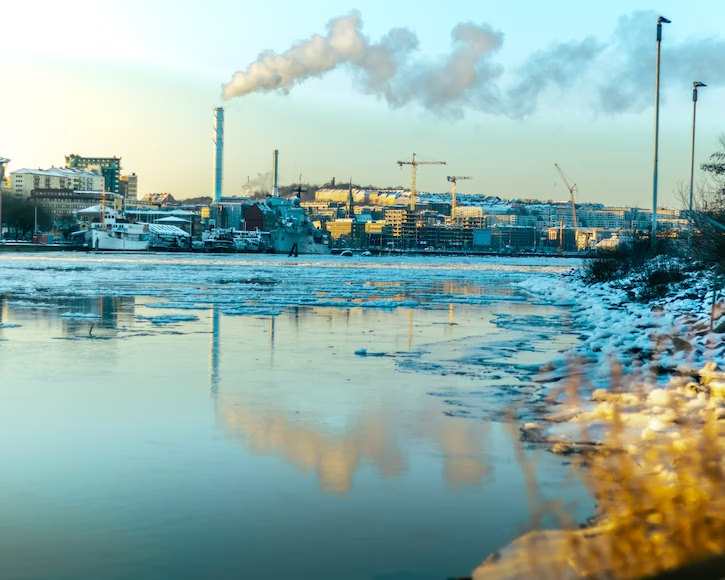Here’s food for thought – how safe do you think America’s drinking water is? The Guardian ran a nine-month investigation on the US water sources, taking samples across the country. What did they discover? Home tap water polluted with lead and arsenic levels double what the Federal Government deems acceptable.
According to the Clean Water Act of 1972, safe and clean drinking water must be made accessible to all American households. Sadly, this is not always the case (neither in America nor in other parts of the world). The study also found that the major reasons for poor-quality water included improper treatment at water processing plants, external contamination, and failing infrastructure.
This is just a general study. Every so often, there have been such catastrophic water contamination issues that hundreds and thousands of people (even unborn generations) are paying the price. Keep reading as this article explores some of the worst water contamination disasters in mankind’s history (from all parts of the world).
1. The Unfortunate Deepwater Horizon Oil Spill
Just back in 1989, the US experienced its worst oil spills when the oil tanker called Exxon Valdez accidentally dispersed 11 million gallons of oil in Prince William Sound, Alaska. This water contamination disaster had impacted nearly 1,300 miles of coastline, destroying all kinds of marine life.
Fast-forward to April 2010, and the Deepwater Horizon oil rig owned by Transocean exploded on the 20th day of the month. This oil rig was situated in the Macondo oil prospect of the continental shelf. Just a few days before the disaster, the well had been sealed by contractor Halliburton.
However, the concrete core installed for the sealing burst open due to natural gas. Later, it was found that the reason for the explosion was a weak core that utilized nitrogen to accelerate the curing process. The immediate explosion killed 11 workers present at the rig’s riser, after which oil freely discharged into the nearby Gulf of Mexico.
It was estimated that the rig spilled oil at the rate of 60,000 barrels a day, making it the current worst oil spill in US history. Given the enormous volume of oil, clean-up efforts failed to remove all of the oil. Bird species like pelicans and seagulls ingested oil and began dying rapidly. Even the soil of the ocean bed was choked with oxygen. It is believed that oil continued to sink towards the ocean floor for over a year after the incident.
2. The Tragic Camp Lejeune Water Contamination Crisis
In 1941, the US military acquired Petersfield Point to establish a Marine Corps Base formally. This Base came to be known as Camp Lejeune in North Carolina, where veterans resided along with their families.
Unknown to the poor souls, a silent killer crept through the Base’s groundwater. It was found to be hazardous waste released from an offsite dry cleaning facility, namely perchloroethylene, and tetrachloroethylene. The two main water storage tanks affected by the improper waste disposal were Hadnot Point (located 11 miles off the Base) and the Tarawa Terrace (located 16 miles from the Camp).
A third tank at Holcomb Boulevard was later affected due to ongoing repair efforts. During this time, water from the Hadnot Point tank was used to supply the areas served by Holcomb Boulevard. This led to cross-contamination.
Over three decades (1953 – 1986) of consuming contaminated water led to the Camp’s residents developing deadly cancers of the bladder, lungs, kidneys, blood, and esophagus, along with other issues such as female infertility, Parkinson’s disease, etc. After rigorous investigations, the Camp Lejeune Justice Act was passed in 2022 to offer victims justice and compensation. Some hundreds of plaintiffs have filed the Camp Lejeune water contamination lawsuit to date.
According to TorHoerman Law attorneys, victims can first file administrative claims for compensation. If that remains unresolved or gets denied even after six months of filing, they can then file a lawsuit. Another condition for filing a lawsuit is that victims must have been exposed to Camp Lejeune water toxicity for at least 30 days anytime between 1953 and 1987.
This incident is written down as the US’ worst public drinking water contamination crisis.
3. The Toxic Waters of Woburn, Massachusetts
Woburn is a modest city located around 10 miles from Boston. In the middle of the 20th CE, numerous children in its residential areas were diagnosed with leukemia. The cases were so rapid that city officials had suspicions regarding the air, water, and food quality.
In May 1979, a horrifying discovery was made – the H and G wells of the city were found contaminated with toxic chemicals. The source was later found to be a tannery run by W.R. Grace. Chemicals like polyvinyl chloride and tetrachloroethylene released from the tannery were directly dumped into the city’s soil, thus contaminating the groundwater.
Besides leukemia, Woburn’s residents have also had to suffer from cancers of the liver, lungs, and kidneys. Families of affected children have sued the tannery responsible for improper waste disposal practices. As of 2021, the water quality of Woburn is well within the accepted levels prescribed by the Environment Protection Agency (EPA).
4. The Fateful Bhopal Gas Disaster
In December 1984, nearly 40 tons of the toxic methyl isocyanate began leaking in Bhopal’s pesticide plant in India. This plant was owned by the Union Carbide Corporation. The densely populated neighborhoods just next to the plant saw hundreds of immediate deaths.
As many as 42 communities surrounding the pesticide plant were affected, and their water remains contaminated to date. The official death count is estimated to be as high as 20,000, with several thousand suffering from blindness, respiratory issues, etc.
The unsafe operating standards and labor shortages were later considered to be the reasons behind the gas leakage. It was only in 2010 that the city’s residents received some hope of justice when the Union Carbide Corporation was held guilty in a court of law. The factory site is now under the state government of Madhya Pradesh.
5. The Poisonous Tap Waters of Lanzhou, China
Lanzhou, the capital of the Gansu province in China, tested positive for water contamination in 2014. A major discovery was made when the French water treatment company, Veolia, was found guilty of Lanzhou’s tap water contamination.
The situation was so bad that the benzene levels were nearly 20 times above the acceptable limits. On top of that, the city’s authorities failed to warn the residents immediately. The delay in warning was another factor that contributed to the crisis.
Benzene is a known carcinogenic which causes damage to the immune system, anemia, loss of white blood cells, etc. Lanzhou’s residents later ransacked nearby stores for mineral water. The crisis seems to have occurred due to an oil spill and affected nearly 2.4 million people.
Parting Thoughts
In the US, the management and disposal of chemical or hazardous waste are regulated by the Resource Conservation Recovery Act (RCRA). It is advised that facilities handling chemical waste dispose of it through the EHS Hazardous Waste Program.
Relevant containers must be used to store chemical waste. Plus, they should be segregated based on compatibility. The containers must have proper labels with complete details like the date of waste generation, chemical name, place of origin, etc.
The details must be submitted to the Environmental Health and Safety office. Waste disposal should only be carried out after written permission from the EHS chemical waste manager. Any slackness in waste handling and management is only another environment and health crisis waiting to happen.
For more valuable information visit our website.





